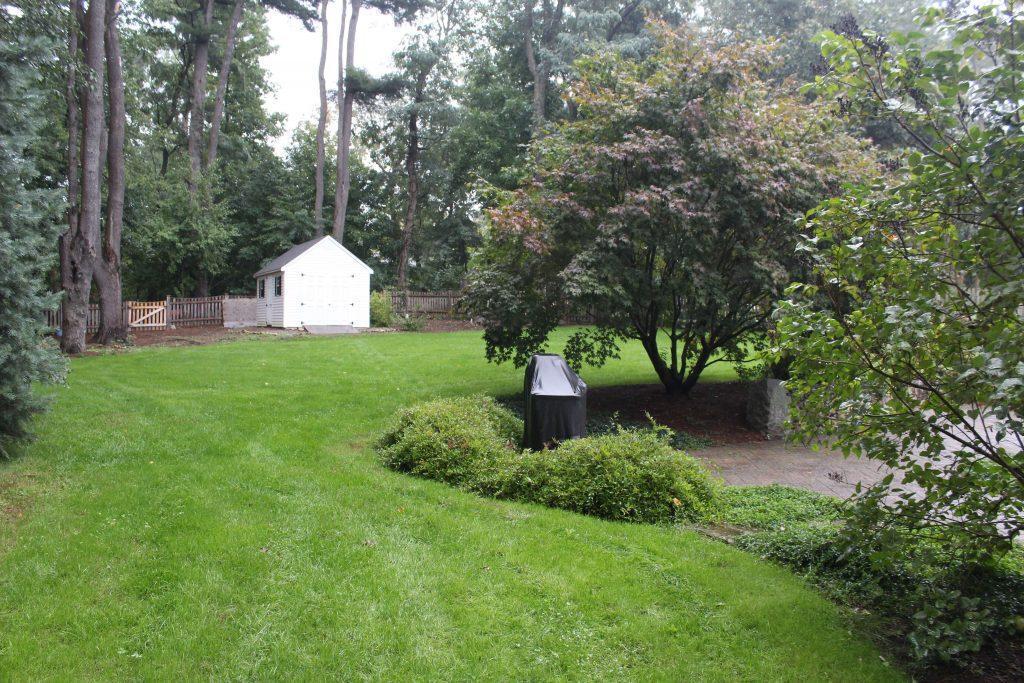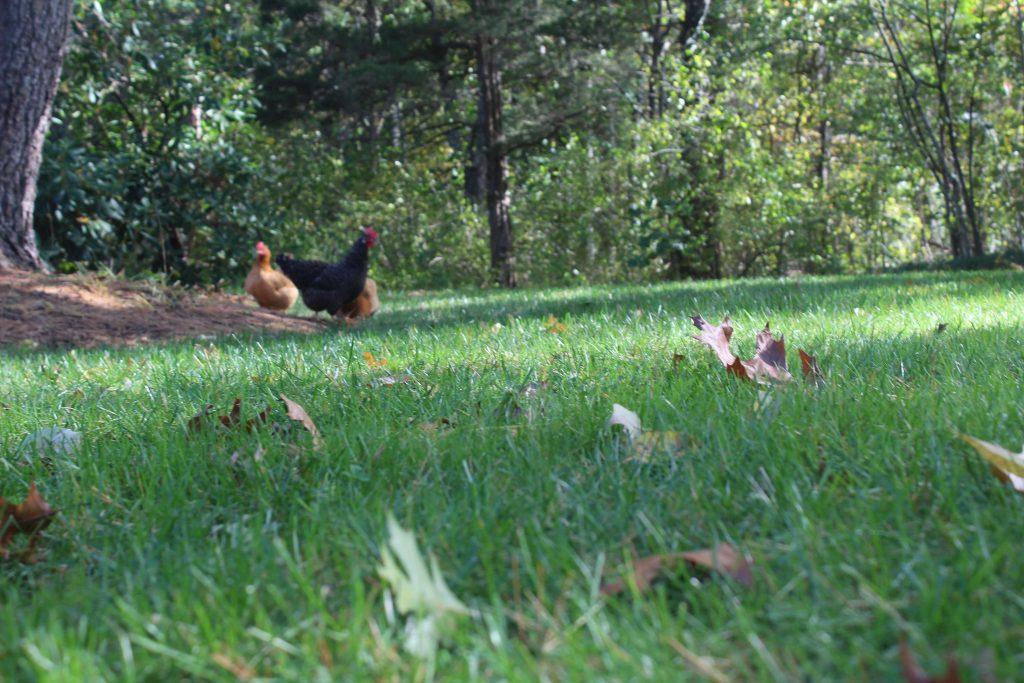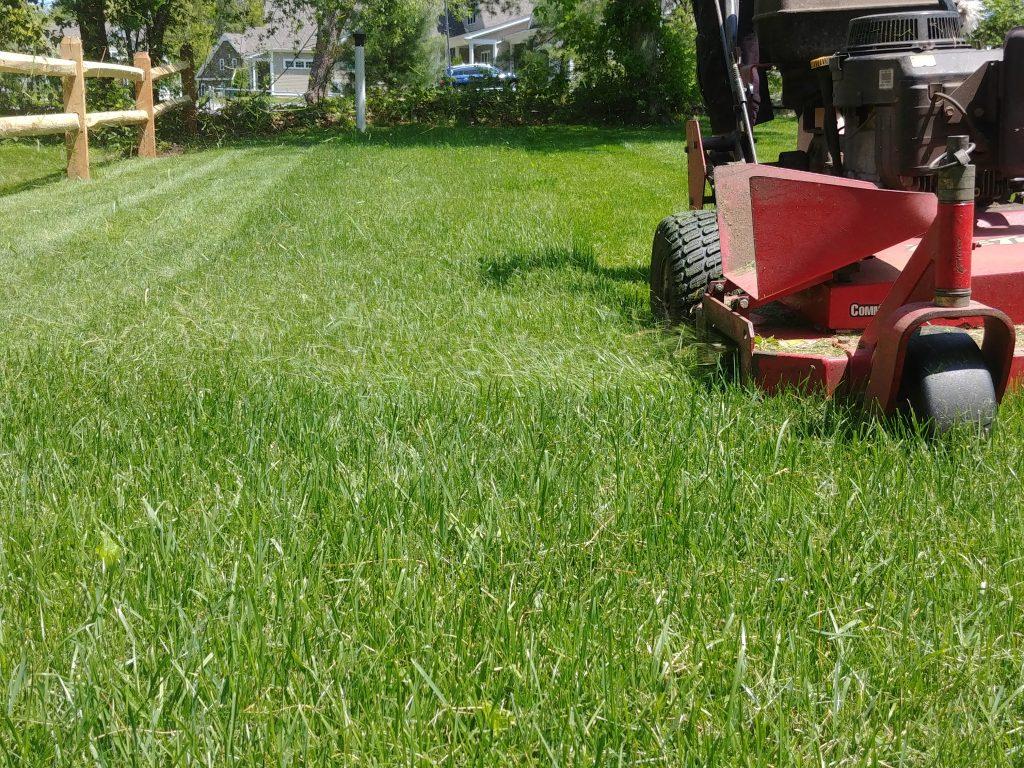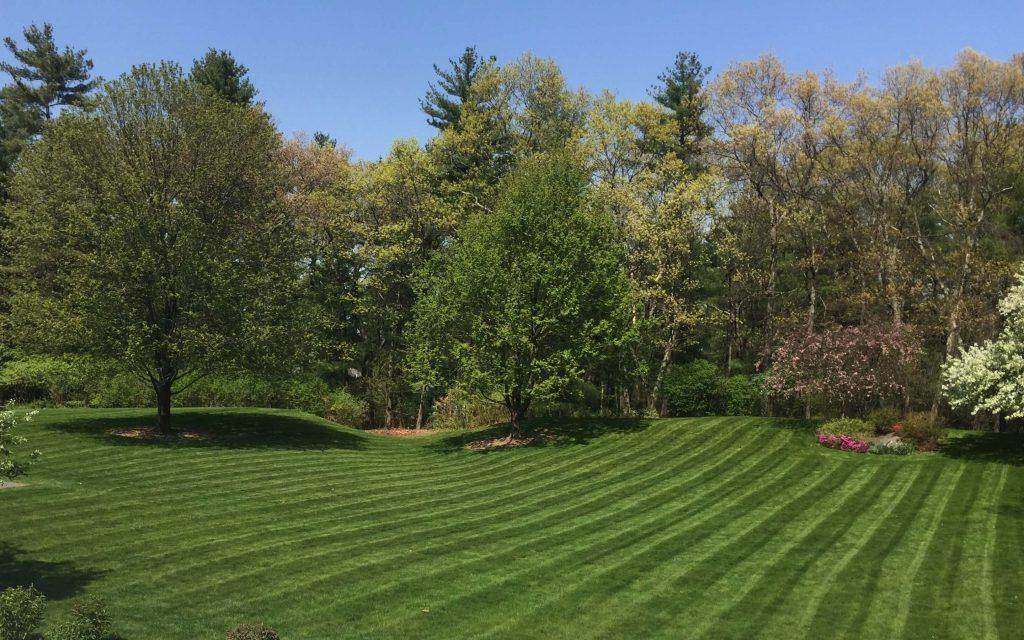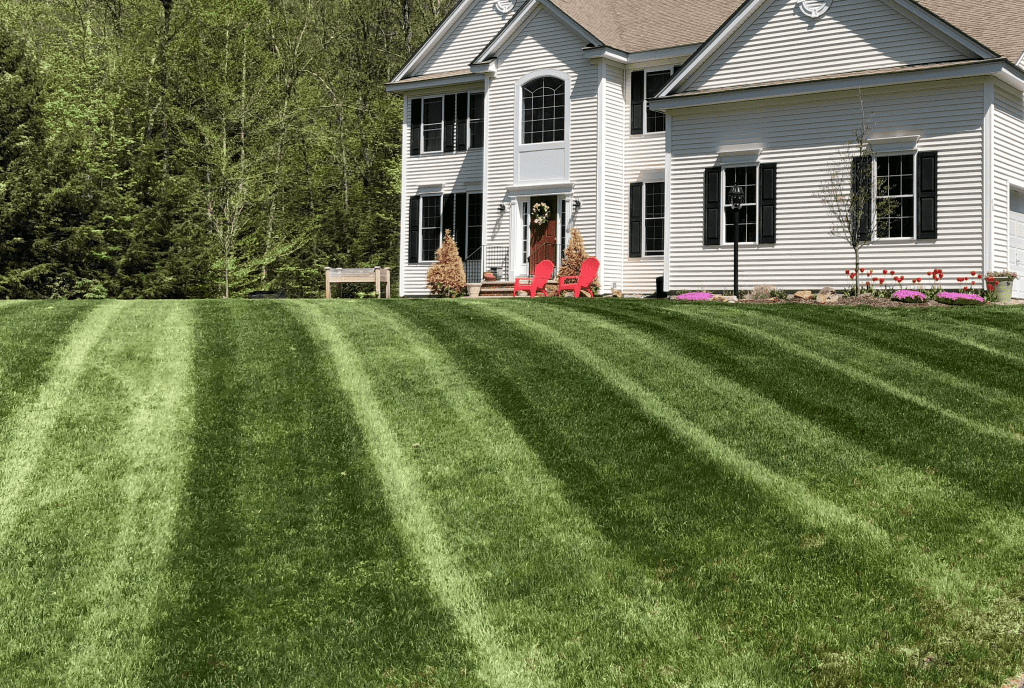Soil Chemistry
Correct pH and calcium-to-magnesium imbalances and create a hospitable environment for soil biology to grow turf.
Cultural Practices
Make the BIGGEST impact on the success of your program with proper mowing, aeration, over-seeding and irrigation practices.
Soil Biology
Feed the microbes in the soil an All-Natural Organic Fertilizer so they remain active and in turn can feed the plant.
Soil Structure
Address organic matter and CEC deficiencies to promote the porosity and nutrient holding capacity of the soil.
PJC Resources

PRACTICAL APPROACH to turf care
Apply the right products and implement proper cultural practices for a successful all-natural Organic Turf Care (OTC) Program. Healthy turf depends on the positive interactions between: soil chemistry, soil biology, soil structure, and cultural practices. So, don’t simply swap a bag of synthetic fertilizer with organic. First, take a soil test.
When growing turf, there are things we cannot control in the season—such as weather, temperature, and rainfall. Moreover, there are impractical things to try and change—like soil composition. Therefore, PJC Organic focuses on components we can control to cultivate positive change. All the while, we take into account budget and labor resources.
PJC’s practical approach is outlined in: “Organic Turf Care Simplified” and “10 Steps to Organic Turf Care“.
No! A fertilizer can claim to be “organic” as long as it contains carbon. An organic fertilizer can fall into many categories: plant & animal meals, animal manure, chilean nitrate, municipal & industrial waste and synthetic organics. Importantly, there are pros and cons associated with these categories, making it difficult to choose product. Additionally, certain fertilizers lend themselves better to All-Natural Organic Turf Care (OTC) than others.
Synthetic organic fertilizers often contain Water Soluble Nitrogen (WSN) in the form of urea. Consequently, WSN synthetic organic fertilizers cause rapid shoot growth, greater potential for run-off, burning and leaching into the groundwater.
On the contrary, PJC’s ProHealthy Turf ® All Natural Premium Organic Fertilizers have a high nutrient content and are plant-based. In addition, our fertilizers have the building block amino acids necessary to encourage the micro flora in the soil that aide in plant nutrient uptake. Lastly, ProHealthy Turf ® fertilizers work WITH nature to improve soil fertility, stimulate soil biology, and add organic matter – all to promote healthy soil ecology.
PJC’s ProHealthy Turf ® All Natural Premium fertilizers rely on soil biology to make the nutrients available to the plant. As such, results are seen when soil temperatures reach 50⁰F and the soil biology becomes active. Therefore, when 50⁰F soil temperatures have been achieved, initial green up occurs within 7 – 10 days. During the season, green up is consistent for longer than a synthetic program. This is because the soil stores the nutrients and feeds the plant when the plant needs the nutrients.
On the contrary, synthetic fertilizers feed the plant directly (whether it needs it or not). With synthetics, green up will occur in 2 – 3 days. However, the plant undergoes greater stress and makes it more susceptible to disease as it is forced out of dormancy.
Soil testing is the cornerstone to any successful Organic Turf Care (OTC) program. PJC’s soil test analysis provides critical information as to the current state of the soil. Therefore, you know what type and amount of product to apply. Lastly, soil testing is used as a baseline to set expectations and determine a budget.
It’s important to note that even chemically treated lawns have weeds. Although, the difference is that through PJC’s All Natural Organic Turf Care (OTC) approach, we focus on WHY there are weeds. Then, we work to improve soil conditions so there are fewer weeds. Surely, as soil conditions and cultural practices improve, the turf becomes healthier and thicker. As a result, turf can out-compete weeds.
Unlike chemical programs that require additional inputs year after year, in time an organic program will requires less. Accepting a few weeds may be part of an organic program. Although, you can still have great looking turf.
Sure, though we prefer that you don’t. The use of pesticides will slow down the positive results of an OTC program and also increase the costs and transition time. We have experience with thousands of properties that have gone ‘cold turkey’ off pesticides with no ill effect.
If you see a need to use pesticides while you transition to an OTC program, we’re confident you can reduce pesticide use by 50% or greater when truly implementing an Integrated Pest Management
(IPM) approach. IPM means that herbicides and pesticides are not routinely applied without first confirming a problem. Many claim to adhere to IPM practices, although they apply pesticides (i.e. grub control or a pre-emergent for broad-leaf weed control) early in the season without evidence of a problem—such practices are not IPM.
The application of pesticides/herbicides and synthetic fertilizers will cause some of the soil biology to die off and others to go dormant. A successful organic program relies on active soil biology. Therefore, we recommend you apply one of PJC’s ProHealthy Turf® All Natural Premium Organic fertilizers if you apply pesticide/herbicide. This will encourage soil biology out of dormancy and begin recovery.
Probably not as much as you’re used to putting down.
Under normal conditions in the Northeast, we recommend the application of approximately 2-2.5 pounds of N per season when using a water insoluble nitrogen (WIN) fertilizer and returning grass clippings. This works out to be approximately 3 applications of ProHealthy Turf® fertilizer at a rate of 10#/1,000sf. Likely, this is half as much nitrogen as you’re used to applying (4-5lb of N) in a season.
By comparison, in a synthetic program, most of your nitrogen “N” is in the form of water soluble nitrogen (WSN), not WIN. Water soluble nitrogen fertilizers are prone to run-off and leaching especially under wet conditions. Subsequently, once the WSN percolates below the root zone it is forever lost to the plant. As a result, easily 50% or more of your synthetic N can be lost through run-off, leaching or excessive rain. On the contrary, with WIN products, the nutrients are held in the root zone by soil biology and released as the plant calls for them…SO, you don’t need as much because you’re not losing as much.
There are many factors that determine your turf’s transition period. First, success with an OTC program involves creating an environment conducive to growing turf. So, current soil conditions, weed & pest pressure, duration on a synthetic program, expectations, and budget, all determine how long it will take.
In the Northeast, soils tend to be sandy loam, low in organic matter, and acidic. As such, when starting with poor soil conditions it can take 3-5 years to cultivate a dense stand of turf while working at changing and improving the underlying soil conditions. Conversely, if you start with healthy soil and a healthy stand of turf, the transition should be seamless. In addition, cultural practices can have the biggest effect either positively or negatively on the success of the program. So, whoever is responsible for maintenance is a key component.
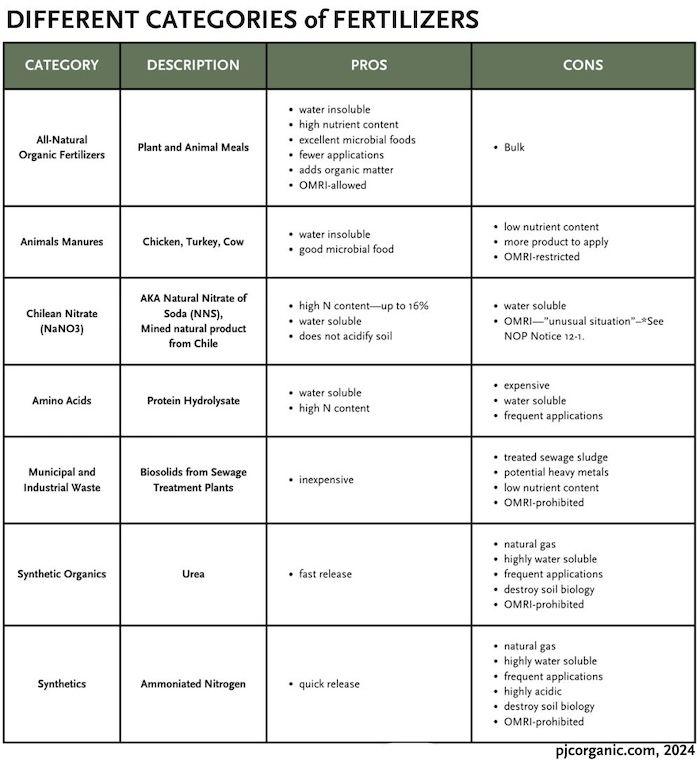
Not all “Organic” fertilizers are the same. The chart above shows some of the categories into which fertilizer may fall, each with pros and cons. Importantly, certain fertilizers lend themselves better to an All Natural Organic Turf Care (OTC) approach than others, and some can actually work against an OTC approach.
All-Natural Organic Fertilizers (like PJC’s ProHealthy Turf Blends) get their nutrient content from plant and animal meals. Plant and animal meals are high nitrogen sources. The cost-per-nutrient tends to be less than other organic alternatives due to all-natural organic fertilizer’s high nutrient content. They are excellent fungal and bacterial foods, which are critical in an all-natural program. While the bulk associated with natural organic fertilizers is often seen as a disadvantage, the advantage is that organic matter and valuable nutrients are added to the soil.
Animal manures are a common form of organic fertilizer. There is often a low cost-per-pound because the base is a waste product. Although, there is also a lower nutrient content. Therefore, the cost-per-nutrient tends to be high. To reach a target nutrient value, a greater amount of product needs to be applied, thereby increasing labor costs. In addition, manures are high in phosphorus, which can increase seed germination in undesirable plants, leading to increased weed pressure. Poultry litter based fertilizers contain some level of copper and arsenic. Heavy metals can build up in the soil and cause health concerns for consumers and runoff. OMRI therefore restricts the use of these fertilizers in organic crop production.
Chilean nitrate—aka Natural Nitrate of Soda (NNS)—is a mined substance. Therefore, it is classified as a natural product. Chilean nitrate has an analysis of 16-0-0 and is considered soluble. NNS is available in cold soils and may be taken up directly by the plant without microbial activity (this may be a perceived advantage in Northeast soils). The National Organic Program (NOP) and OMRI have changed the restriction on NNS in place since October 2012. Now, production practices must maintain or improve the natural resources of the operations. NNS must be used sparingly because it is also a salt and can have a negative effect on the health of the soil when used excessively.
The use of the term “amino acids” in the marketplace is somewhat misleading, because all organic fertilizers derived from plant and animal meals contain amino acids. Amino acids are the building blocks for protein, which plant and animal meals contain. Vendors are attempting to use the term “amino acid fertilizer” to refer to a class of fertilizers that are soluble in water. They are protein hydrolysates that are manufactured in one of three ways: either through enzymatic, acid, or alkaline hydrolysis of proteins. In effect, protein hydrolysates are making a water-soluble organic nitrogen source available to plants. Because the nitrogen is water-soluble, there is the potential the nitrogen that’s not taken up by the plant will leach. There are times when the use of such products may prove advantageous and times when they do not.
Biosolids are the output from municipal sewage treatment plants and another form of fertilizer. The potential inclusion of heavy metals is the greatest concern with these products. These metals come from industrial waste and prescription medicines. Additionally, there is concern with potential chemical contamination from household cleaners, antibacterial agents, and other things poured down the drain. Because of these concerns, OMRI prohibits the use of these fertilizers in organic crop production.
A fertilizer can claim to be “organic” without being all-natural as long as it contains carbon. Urea is an inexpensive fertilizer and is the most common form of a synthetic organic. This synthetic organic is often coated in an effort to delay the release of nitrogen and reduce burn potential. Urea—like other synthetic fertilizers—is a salt. The high salt index associated with urea has a negative impact on the soil biology by killing many microorganisms off. Salts also make it more difficult for seeds or plants to extract the water they need for normal growth.
Synthetic fertilizers for turf generally contain urea, described above, and/or an inorganic nitrogen source usually in the form of ammonium sulfate, ammonium nitrate or potassium nitrate. These fertilizers have a greater potential for loss through leaching and volatility. This translates into a need to apply greater pounds of nitrogen per 1,000sf per growing season than a natural water insoluble organic product.
Art of Balancing Soil Nutrients: a practical guide to interpreting soil tests by William McKibben. 2012, Acres U.S.A, Austin, TX.
The Biological Farmer: A Complete Guide to the Sustainable & Profitable Biological System of Farming by Gary F. Zimmer. 2017, Second Edition, Acres U.S.A, Austin, TX.
Dirt to Soil One Family’s Journey into Regenerative Agriculture by Gabe Brown. 2018, Chelsea Green Publishing, White River Junction, VT.
Fundamentals of Soil Ecology by David C. Coleman and D. A. Crossley, Jr., Paul F. Hendrix. 2004, Second Edition, Elsevier Academic Press, Burlington, MA.
Fundamentals of Turfgrass Management by Nick Christians. 2017, Third Edition, John Wiley & Sons, Inc., Hoboken, NJ.
HANDBOOK OF $UCCESSFUL ECOLOOGICAL LAWN CARE by Paul D. Sachs. 1996, The Edaphic Press, Newbury, VT.
How Soils Work: A Study into the God-Plane Mutualism of Soils and Crops by Paul Syltie, Ph.D. 2002, Xulon Press, Fairfax, VA.
Kiss the ground: a food revolutionary’s guide to reversing climate change by Josh Tickell. 2017, First Enliven Books, New York, NY.
Life in the Soil: a guide for Naturalists and Gardeners by James B. Nardi. 2007, The University of Chicago Press, Chicago, IL.
Managing Healthy Sports Fields: A Guide to Using Organic Materials for Low-Maintenance and Chemical-Free Playing Fields by Paul D. Sachs. 2004, John Wiley & Sons, Inc., Hoboken, New Jersey.
Modern Soil Microbiology by J. D. van Elsas, Janet Jansson, Jack T Trevors. editors, 2007, Second Edition, CRC Press, Boca Raton, FL.
The Organic Lawn Care Manual: a natural, low maintenance system for a beautiful safe lawn by Paul Tukey. 2007, Storey Publishing, North Adams, MA.
SCIENCE in AGRICULTURE Advanced Methods for Sustainable Farming by Dr. Arden B. Andersen. 2000, Acres U.S.A, Austin, TX.
The Soil Will Save Us by Kristin Ohlson. 2014, Rodale, New York, NY.
WEEDS Control without Poisons by Charles Walters. 1999, Acres U.S.A, Austin, TX
Weeds of the Northeast by Richard H. Uva, Joseph C. Neal and Joseph M. DiTomaso. 1997, Cornell University Press, Ithaca, NY.
Chart your course—A soil test provides necessary information to establish a realistic turf management program. As such, we test for pH, buffer pH, Organic Matter, Cation Exchange Capacity (CEC) and base saturation with a focus on calcium-to-magnesium ratio. In addition, a soil test should be taken every 3 years to monitor change.
APPLY AN ALL-NATURAL ORGANIC FERTILIZER EVERY 7-10 WEEKS. Organic fertilizers feed the soil biology and the soil biology feeds the plant. Further, buy products that contain water insoluble nitrogen and low or no phosphorous.
APPLY SOIL AMENDMENTS ACCORDING TO SOIL TEST RESULTS. Maintain pH between 6 and 7, ideally 6.5-6.7 using calcitic or dolomitic lime based on calcium-to-magnesium ratio. Rate & frequency is determined by buffer pH. To adjust calcium only, use gypsum.
APPLY SOIL AMENDMENTS ACCORDING TO SOIL TEST RESULTS. Improve Organic Matter & CEC using Charge-S3 and Boost+S3. Additionally, Gypsum helps break up clay soils.
THE MOST IMPORTANT CULTURAL PRACTICE! First, Mow High – 3-1/2 inches to encourage deep roots and shade the soil. Secondly, cut no more than 1/3 of the grass blade at a time. Third, avoid mowing wet grass. Lastly, sharpen mower blades after every 25 hours of use to prevent tearing grass blade. Damaged grass blades lose moisture and are susceptible to disease.
ADDS ORGANIC MATTER AND IS A NATURAL FERTILIZER = additional 1lb “N” in a season. Although, bag clippings when weed seeds and flowers are present (ie. crabgrass, dandelions) to mitigate further spread of seeds.
Follow PJC’s 1-2-3-2-1 Watering Method. Water deep, infrequently, and in the morning. 3/4 – 1.25” inch of water a week. Newly seeded areas and extreme heat water necessitate more frequent watering for shorter periods. Conversely, note that over-watering leads to compaction and disease.
RELIEVE SOIL COMPACTION. Aerate when grass is actively growing to allow grass roots to spread and improve air circulation in the root zone. It is best to aerate in Early Spring and Fall. Athletic fields should be aerated with higher frequency throughout the season.
CREATE A DENSE STAND OF GRASS TO CROWD OUT WEEDS. In the Spring, seed slice thin areas. Top dress and over seed trouble spots. Broadcast grass seed when aerating and water to establish. Lastly, plan for Late Summer and Fall over seeding, as it’s the best window for germination and establishment.
WEEDS ARE AN INDICATION OF UNDERLYING SOIL CONDITIONS. Therefore, work towards the environment grass requires to grow (steps 1-9) and in 3-5 years weeds diminish. In the meantime, manually pull weeds and re-seed bare areas. Treat grubs with hB nematodes or cedar product. Notably, over-watering and improper mowing practices contribute to weed pressure.
Alliance for a Healthy Tomorrow, Boston, MA.
The Association for the Advancement of Sustainability in Higher Education, Philadelphia, PA.
Beyond Pesticides, Washington DC.
Center of Health, Environment, Justice, Falls Church, VA.
Collaborative on Health & the Environment, Bolinas, CA.
Ecological Landscape Association, Sandown, NH.
Environmental Health Perspectives, Durham, NC.
Environment & Human Health Inc.,North Haven, CT.
Grassroots Environmental Education, Port Washington, NY.
Monsanto Roundup Trial – U.S. Right to Know.
MOSES – Midwest Organic & Sustainable Education Service, Spring Valley, WI.
NOFA – Organic Land Care, Derby CT.
NOFA – Northeast Organic Farmers Association, Barre, MA:.
Non-Toxic Dover, NH.
Northwest Center for Alternatives to Pesticides, Eugene, OR.
President’s Cancer Panel 2008-2009: REDUCING ENVIRONMENTAL CANCER RISK (PDF).
Silent Spring Institute, Newton, MA.
Toxic Action Center, Boston MA.
TURI – Toxic Use Reduction Institute, UMASS Lowell.
TURI – Case Studies: Organic Grass Playing Fields.
No! A fertilizer can claim to be “organic” as long as it contains carbon. An organic fertilizer can fall into many categories: plant & animal meals, animal manure, chilean nitrate, municipal & industrial waste and synthetic organics. Importantly, there are pros and cons associated with these categories, making it difficult to choose product. Additionally, certain fertilizers lend themselves better to All-Natural Organic Turf Care (OTC) than others.
Synthetic organic fertilizers often contain Water Soluble Nitrogen (WSN) in the form of urea. Consequently, WSN synthetic organic fertilizers cause rapid shoot growth, greater potential for run-off, burning and leaching into the groundwater.
On the contrary, PJC’s ProHealthy Turf ® All Natural Premium Organic Fertilizers have a high nutrient content and are plant-based. In addition, our fertilizers have the building block amino acids necessary to encourage the micro flora in the soil that aide in plant nutrient uptake. Lastly, ProHealthy Turf ® fertilizers work WITH nature to improve soil fertility, stimulate soil biology, and add organic matter – all to promote healthy soil ecology.
PJC’s ProHealthy Turf ® All Natural Premium fertilizers rely on soil biology to make the nutrients available to the plant. As such, results are seen when soil temperatures reach 50⁰F and the soil biology becomes active. Therefore, when 50⁰F soil temperatures have been achieved, initial green up occurs within 7 – 10 days. During the season, green up is consistent for longer than a synthetic program. This is because the soil stores the nutrients and feeds the plant when the plant needs the nutrients.
On the contrary, synthetic fertilizers feed the plant directly (whether it needs it or not). With synthetics, green up will occur in 2 – 3 days. However, the plant undergoes greater stress and makes it more susceptible to disease as it is forced out of dormancy.
Soil testing is the cornerstone to any successful Organic Turf Care (OTC) program. PJC’s soil test analysis provides critical information as to the current state of the soil. Therefore, you know what type and amount of product to apply. Lastly, soil testing is used as a baseline to set expectations and determine a budget.
It’s important to note that even chemically treated lawns have weeds. Although, the difference is that through PJC’s All Natural Organic Turf Care (OTC) approach, we focus on WHY there are weeds. Then, we work to improve soil conditions so there are fewer weeds. Surely, as soil conditions and cultural practices improve, the turf becomes healthier and thicker. As a result, turf can out-compete weeds.
Unlike chemical programs that require additional inputs year after year, in time an organic program will requires less. Accepting a few weeds may be part of an organic program. Although, you can still have great looking turf.
Sure, though we prefer that you don’t. The use of pesticides will slow down the positive results of an OTC program and also increase the costs and transition time. We have experience with thousands of properties that have gone ‘cold turkey’ off pesticides with no ill effect.
If you see a need to use pesticides while you transition to an OTC program, we’re confident you can reduce pesticide use by 50% or greater when truly implementing an Integrated Pest Management
(IPM) approach. IPM means that herbicides and pesticides are not routinely applied without first confirming a problem. Many claim to adhere to IPM practices, although they apply pesticides (i.e. grub control or a pre-emergent for broad-leaf weed control) early in the season without evidence of a problem—such practices are not IPM.
The application of pesticides/herbicides and synthetic fertilizers will cause some of the soil biology to die off and others to go dormant. A successful organic program relies on active soil biology. Therefore, we recommend you apply one of PJC’s ProHealthy Turf® All Natural Premium Organic fertilizers if you apply pesticide/herbicide. This will encourage soil biology out of dormancy and begin recovery.
Probably not as much as you’re used to putting down.
Under normal conditions in the Northeast, we recommend the application of approximately 2-2.5 pounds of N per season when using a water insoluble nitrogen (WIN) fertilizer and returning grass clippings. This works out to be approximately 3 applications of ProHealthy Turf® fertilizer at a rate of 10#/1,000sf. Likely, this is half as much nitrogen as you’re used to applying (4-5lb of N) in a season.
By comparison, in a synthetic program, most of your nitrogen “N” is in the form of water soluble nitrogen (WSN), not WIN. Water soluble nitrogen fertilizers are prone to run-off and leaching especially under wet conditions. Subsequently, once the WSN percolates below the root zone it is forever lost to the plant. As a result, easily 50% or more of your synthetic N can be lost through run-off, leaching or excessive rain. On the contrary, with WIN products, the nutrients are held in the root zone by soil biology and released as the plant calls for them…SO, you don’t need as much because you’re not losing as much.
There are many factors that determine your turf’s transition period. First, success with an OTC program involves creating an environment conducive to growing turf. So, current soil conditions, weed & pest pressure, duration on a synthetic program, expectations, and budget, all determine how long it will take.
In the Northeast, soils tend to be sandy loam, low in organic matter, and acidic. As such, when starting with poor soil conditions it can take 3-5 years to cultivate a dense stand of turf while working at changing and improving the underlying soil conditions. Conversely, if you start with healthy soil and a healthy stand of turf, the transition should be seamless. In addition, cultural practices can have the biggest effect either positively or negatively on the success of the program. So, whoever is responsible for maintenance is a key component.

Not all “Organic” fertilizers are the same. The chart above shows some of the categories into which fertilizer may fall, each with pros and cons. Importantly, certain fertilizers lend themselves better to an All Natural Organic Turf Care (OTC) approach than others, and some can actually work against an OTC approach.
All-Natural Organic Fertilizers (like PJC’s ProHealthy Turf Blends) get their nutrient content from plant and animal meals. Plant and animal meals are high nitrogen sources. The cost-per-nutrient tends to be less than other organic alternatives due to all-natural organic fertilizer’s high nutrient content. They are excellent fungal and bacterial foods, which are critical in an all-natural program. While the bulk associated with natural organic fertilizers is often seen as a disadvantage, the advantage is that organic matter and valuable nutrients are added to the soil.
Animal manures are a common form of organic fertilizer. There is often a low cost-per-pound because the base is a waste product. Although, there is also a lower nutrient content. Therefore, the cost-per-nutrient tends to be high. To reach a target nutrient value, a greater amount of product needs to be applied, thereby increasing labor costs. In addition, manures are high in phosphorus, which can increase seed germination in undesirable plants, leading to increased weed pressure. Poultry litter based fertilizers contain some level of copper and arsenic. Heavy metals can build up in the soil and cause health concerns for consumers and runoff. OMRI therefore restricts the use of these fertilizers in organic crop production.
Chilean nitrate—aka Natural Nitrate of Soda (NNS)—is a mined substance. Therefore, it is classified as a natural product. Chilean nitrate has an analysis of 16-0-0 and is considered soluble. NNS is available in cold soils and may be taken up directly by the plant without microbial activity (this may be a perceived advantage in Northeast soils). The National Organic Program (NOP) and OMRI have changed the restriction on NNS in place since October 2012. Now, production practices must maintain or improve the natural resources of the operations. NNS must be used sparingly because it is also a salt and can have a negative effect on the health of the soil when used excessively.
The use of the term “amino acids” in the marketplace is somewhat misleading, because all organic fertilizers derived from plant and animal meals contain amino acids. Amino acids are the building blocks for protein, which plant and animal meals contain. Vendors are attempting to use the term “amino acid fertilizer” to refer to a class of fertilizers that are soluble in water. They are protein hydrolysates that are manufactured in one of three ways: either through enzymatic, acid, or alkaline hydrolysis of proteins. In effect, protein hydrolysates are making a water-soluble organic nitrogen source available to plants. Because the nitrogen is water-soluble, there is the potential the nitrogen that’s not taken up by the plant will leach. There are times when the use of such products may prove advantageous and times when they do not.
Biosolids are the output from municipal sewage treatment plants and another form of fertilizer. The potential inclusion of heavy metals is the greatest concern with these products. These metals come from industrial waste and prescription medicines. Additionally, there is concern with potential chemical contamination from household cleaners, antibacterial agents, and other things poured down the drain. Because of these concerns, OMRI prohibits the use of these fertilizers in organic crop production.
A fertilizer can claim to be “organic” without being all-natural as long as it contains carbon. Urea is an inexpensive fertilizer and is the most common form of a synthetic organic. This synthetic organic is often coated in an effort to delay the release of nitrogen and reduce burn potential. Urea—like other synthetic fertilizers—is a salt. The high salt index associated with urea has a negative impact on the soil biology by killing many microorganisms off. Salts also make it more difficult for seeds or plants to extract the water they need for normal growth.
Synthetic fertilizers for turf generally contain urea, described above, and/or an inorganic nitrogen source usually in the form of ammonium sulfate, ammonium nitrate or potassium nitrate. These fertilizers have a greater potential for loss through leaching and volatility. This translates into a need to apply greater pounds of nitrogen per 1,000sf per growing season than a natural water insoluble organic product.
Art of Balancing Soil Nutrients: a practical guide to interpreting soil tests by William McKibben. 2012, Acres U.S.A, Austin, TX.
The Biological Farmer: A Complete Guide to the Sustainable & Profitable Biological System of Farming by Gary F. Zimmer. 2017, Second Edition, Acres U.S.A, Austin, TX.
Dirt to Soil One Family’s Journey into Regenerative Agriculture by Gabe Brown. 2018, Chelsea Green Publishing, White River Junction, VT.
Fundamentals of Soil Ecology by David C. Coleman and D. A. Crossley, Jr., Paul F. Hendrix. 2004, Second Edition, Elsevier Academic Press, Burlington, MA.
Fundamentals of Turfgrass Management by Nick Christians. 2017, Third Edition, John Wiley & Sons, Inc., Hoboken, NJ.
HANDBOOK OF $UCCESSFUL ECOLOOGICAL LAWN CARE by Paul D. Sachs. 1996, The Edaphic Press, Newbury, VT.
How Soils Work: A Study into the God-Plane Mutualism of Soils and Crops by Paul Syltie, Ph.D. 2002, Xulon Press, Fairfax, VA.
Kiss the ground: a food revolutionary’s guide to reversing climate change by Josh Tickell. 2017, First Enliven Books, New York, NY.
Life in the Soil: a guide for Naturalists and Gardeners by James B. Nardi. 2007, The University of Chicago Press, Chicago, IL.
Managing Healthy Sports Fields: A Guide to Using Organic Materials for Low-Maintenance and Chemical-Free Playing Fields by Paul D. Sachs. 2004, John Wiley & Sons, Inc., Hoboken, New Jersey.
Modern Soil Microbiology by J. D. van Elsas, Janet Jansson, Jack T Trevors. editors, 2007, Second Edition, CRC Press, Boca Raton, FL.
The Organic Lawn Care Manual: a natural, low maintenance system for a beautiful safe lawn by Paul Tukey. 2007, Storey Publishing, North Adams, MA.
SCIENCE in AGRICULTURE Advanced Methods for Sustainable Farming by Dr. Arden B. Andersen. 2000, Acres U.S.A, Austin, TX.
The Soil Will Save Us by Kristin Ohlson. 2014, Rodale, New York, NY.
WEEDS Control without Poisons by Charles Walters. 1999, Acres U.S.A, Austin, TX
Weeds of the Northeast by Richard H. Uva, Joseph C. Neal and Joseph M. DiTomaso. 1997, Cornell University Press, Ithaca, NY.
Chart your course—A soil test provides necessary information to establish a realistic turf management program. As such, we test for pH, buffer pH, Organic Matter, Cation Exchange Capacity (CEC) and base saturation with a focus on calcium-to-magnesium ratio. In addition, a soil test should be taken every 3 years to monitor change.
APPLY AN ALL-NATURAL ORGANIC FERTILIZER EVERY 7-10 WEEKS. Organic fertilizers feed the soil biology and the soil biology feeds the plant. Further, buy products that contain water insoluble nitrogen and low or no phosphorous.
APPLY SOIL AMENDMENTS ACCORDING TO SOIL TEST RESULTS. Maintain pH between 6 and 7, ideally 6.5-6.7 using calcitic or dolomitic lime based on calcium-to-magnesium ratio. Rate & frequency is determined by buffer pH. To adjust calcium only, use gypsum.
APPLY SOIL AMENDMENTS ACCORDING TO SOIL TEST RESULTS. Improve Organic Matter & CEC using Charge-S3 and Boost+S3. Additionally, Gypsum helps break up clay soils.
THE MOST IMPORTANT CULTURAL PRACTICE! First, Mow High – 3-1/2 inches to encourage deep roots and shade the soil. Secondly, cut no more than 1/3 of the grass blade at a time. Third, avoid mowing wet grass. Lastly, sharpen mower blades after every 25 hours of use to prevent tearing grass blade. Damaged grass blades lose moisture and are susceptible to disease.
ADDS ORGANIC MATTER AND IS A NATURAL FERTILIZER = additional 1lb “N” in a season. Although, bag clippings when weed seeds and flowers are present (ie. crabgrass, dandelions) to mitigate further spread of seeds.
Follow PJC’s 1-2-3-2-1 Watering Method. Water deep, infrequently, and in the morning. 3/4 – 1.25” inch of water a week. Newly seeded areas and extreme heat water necessitate more frequent watering for shorter periods. Conversely, note that over-watering leads to compaction and disease.
RELIEVE SOIL COMPACTION. Aerate when grass is actively growing to allow grass roots to spread and improve air circulation in the root zone. It is best to aerate in Early Spring and Fall. Athletic fields should be aerated with higher frequency throughout the season.
CREATE A DENSE STAND OF GRASS TO CROWD OUT WEEDS. In the Spring, seed slice thin areas. Top dress and over seed trouble spots. Broadcast grass seed when aerating and water to establish. Lastly, plan for Late Summer and Fall over seeding, as it’s the best window for germination and establishment.
WEEDS ARE AN INDICATION OF UNDERLYING SOIL CONDITIONS. Therefore, work towards the environment grass requires to grow (steps 1-9) and in 3-5 years weeds diminish. In the meantime, manually pull weeds and re-seed bare areas. Treat grubs with hB nematodes or cedar product. Notably, over-watering and improper mowing practices contribute to weed pressure.
Alliance for a Healthy Tomorrow, Boston, MA.
The Association for the Advancement of Sustainability in Higher Education, Philadelphia, PA.
Beyond Pesticides, Washington DC.
Center of Health, Environment, Justice, Falls Church, VA.
Collaborative on Health & the Environment, Bolinas, CA.
Ecological Landscape Association, Sandown, NH.
Environmental Health Perspectives, Durham, NC.
Environment & Human Health Inc.,North Haven, CT.
Grassroots Environmental Education, Port Washington, NY.
Monsanto Roundup Trial – U.S. Right to Know.
MOSES – Midwest Organic & Sustainable Education Service, Spring Valley, WI.
NOFA – Organic Land Care, Derby CT.
NOFA – Northeast Organic Farmers Association, Barre, MA:.
Non-Toxic Dover, NH.
Northwest Center for Alternatives to Pesticides, Eugene, OR.
President’s Cancer Panel 2008-2009: REDUCING ENVIRONMENTAL CANCER RISK (PDF).
Silent Spring Institute, Newton, MA.
Toxic Action Center, Boston MA.
TURI – Toxic Use Reduction Institute, UMASS Lowell.
TURI – Case Studies: Organic Grass Playing Fields.
Did You Know?
Organic Turf Care Calendar
SOIL TEST & SITE ASSESSMENT (photos are helpful to chart progress)
PRODUCT:
– PJC ProHealthy Turf Organic Fertilizer, when soil temps are above 50° (1st application)
– PJC Premium Grass Seed (High % perennial ryegrass)
CULTURAL PRACTICES:
– Property Clean Up & 1 ST Mow: start low 2”-2 ½” and increase to 3½” by end of May.
– Seed Slice and/or Lawn Fix: Top dress and over seed trouble spots or seed slice.
– Water over seeded areas 3 times a day to keep seed moist.
Over-seeding can occur until May 15th.
PRODUCT:
– PJC ProHealthy Turf Organic Fertilizer (2nd application)
– Soil amendments (based on soil test results)
– High Efficiency Lime or Gypsum
– Soil Conditioner: CHARGE S3 and/or Humic+
CULTURAL PRACTICES:
– Mow high – 3” to 4” and cut no more than 1/3 of the grass blade at a time.
– Return grass clippings to recycle nutrients and add organic matter.
– Sharpen mower blades after 24 hours of use.
– Water deep, infrequently and in the morning so grass receives 1” water per week.
CULTURAL PRACTICES:
– Mow high – 3” to 4”.
– Return grass clippings to recycle nutrients and add organic matter. (If crab grass seeds are present bag clippings to mitigate spread).
– Water deep, infrequently and in the morning so grass receives 1” water per week. If you don’t have irrigation, grass may go dormant July into August but will bounce back in the fall.
Optional Liquid Application: combination of squid, crab, kelp, and/or humate
AFTER AUGUST 15TH
PRODUCT:
– PJC ProHealthy Turf Organic Fertilizer (3rd application)
– Soil amendments (based on soil test):
– High Efficiency Lime or Gypsum
– Soil Conditioner: CHARGE S3 and/or Humic+
– PJC Premium Grass Seed
CULTURAL PRACTICES:
– Aerate & Over-seed.
– Lawn Fix: Top dress and over seed trouble spots.
– Mow high – 3 to 3.5”.
– Return grass clippings to recycle nutrients and add organic matter. If crab grass seeds are present bag clippings to mitigate spread.
– Sharpen mower blades after 25 hours of use.
– Water over seeded areas 3 times a day to keep seed moist during germination.
PRODUCT:
– Apply PJC ProHealthy Turf Organic Fertilizer and Soil Amendments if not applied in August
– Hb Nematodes, Cedar Cure or other 25b product for Grubs (If grub problem is identified)
CULTURAL PRACTICES:
– Mow high – 3 to 3.5”.
– Return grass clippings to recycle nutrients and add organic matter.
– Scout for grubs – more than 8 per SF treat.
– Continue Aerating & Over-seeding – until September 15th.
– Water over seeded areas 3 times a day to keep seed moist during germination.
END OF SEASON SITE ASSESSMENT
PRODUCT:
– For high expectations, optional 4th application: PJC ProHealthy Turf Organic Fertilizer (by Oct 15 th )
– Soil Amendments can be applied up until ground freezes
CULTURAL PRACTICES:
– Continue to return grass clippings and mulch leaves.
– End of month start lowering mowing height.
Clean Up, Final cut at 2.5” & Thank You!
Artificial Vs. Natural Turf
1. Safety Concerns—While it may look flashy and play fast, there are significant player safety concerns associated with artificial turf. Increased exposure to injury risk, diseases, and heat pose legitimate concern. READ MORE>
2. Maintenance—While an artificial field doesn’t require regular mowing, irrigation, and fertilization, there is still daily maintenance required when it’s overseen properly. Maintenance includes infill material additions, grooming, irrigation, debris removal, disinfecting, drag mats, sweeping, seam repair, snow and ice management, and testing requirements. READ MORE>
3. Financial Costs—It’s a myth that synthetic fields require less maintenance, and therefore less money, than natural turf grass. We cover financial costs of artificial fields as it pertains to upkeep and replacement. READ MORE>
PJC's Eco-Turf Talk Newsletter
Looking For A Service Provider?
Landscapers in your area use our Organic All-Natural Turf Products as part of their program.

